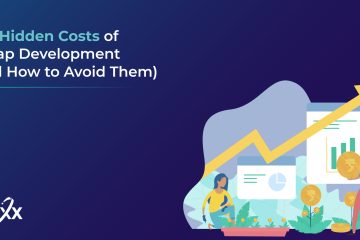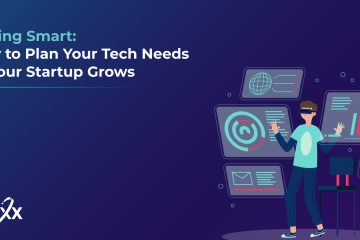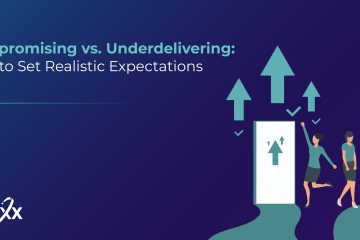Data visualization plays a significant role in both the PC and mobile app worlds. It works for far more than just merely business, as it has immense feedback potential.
When developing virtually anything, you’ll want to test it out. Now, the data that you garner from tests can be redundant, useless, or situational – which means you’ll have to root it out.
After rooting out the less desirable raw data and turning it into viable data, you’ll want to present it. This step is essential in most marketing strategies and integral to making any educated business decision.
When you’ve refined the data to such an extent that it’s viable, you’ll want to present it in a positive and understandable light. Not everyone, especially not sponsors and users, will understand what the endless stacks of numbers mean.
Humans are highly visual creatures, which means that you have to present the data visually. That is where the role of data visualization in mobile app development comes in.
Why is Data Visualization Crucial In Mobile App Development?
When it comes to mobile app development, you’ll usually need to do many things before you tie a project up. If you want to put advertisements on your app, which you most likely do, you’ll want to place them in the optimal position.
Another crucial step in development is testing. When you’re developing an app or a service for a mobile device, you’ll want to know what the user experience is like.
Not every phone is an iPhone, and not every operating system is the same. Smartphones come in all kinds of shapes, sizes, and serve different purposes. Now, this is liawhy you need to test your mobile app on as many phones as possible.
The last thing you want to check when developing a mobile app is its actual usability. To gain a perspective on what you need to optimize your app fully, you’ll want to test it.
All of this testing is only as viable as the data that’s garnered from it. After filtering out the data, you’ll need to visualize it.
Visualizing your data has a significant implementation in all spheres of development. When you’re visualizing your data for mobile app development, you can expect the following:
- Better feedback from users
- Better understanding by sponsors and users
- More optimized app design
- Highlighted app issues
- Faster reaction and patching time
- Data interaction
- AI and AR optimization
- Garner even more data
Data visualization is integral to a proper development cycle, as it works to connect the users, developers, managers, and sponsors through a simple, understandable, and streamlined medium.

Data Visualization During The Apps Lifecycle
A developer’s job is never actually complete. Smartphone applications are disputably a form of art and require constant management, upgrades, and updates. If you want your app to be a success, you’ll have to devote a lot of time to optimize it.
When an app is out, you’ll start receiving a lot of feedback from the users. Most of these comments are going to be positive, as long as you’ve performed proper testing before releasing your app – but some will be criticism.
Some criticism isn’t based on anything, just a salty user venting their frustration, and might provide redundant data. Collecting all the feedback that you receive from your user base takes a while and refining that data will make all the redundancies out.
When the data is viable, you again have to present it. By showing your feedback data in visual form, you get a better picture of the changes that need to be made.
As a manager, this will allow you to better converse with your administrators, developers, and sponsors to fix, improve, or otherwise convey your app better to the general public. Through data visualization, your app will gain an edge over the competition, as your reaction time decreases significantly.
Different people understand different things differently. Visualizing your data makes it easier to digest for most people, which will, in turn, yield the results far quicker and more accurate. If a developer or administrator would like the raw numbers, you can always provide them.

Ground Rules for Data Visualization in Mobile App Development
There are a couple of ground rules that you need to take into account when you’re looking to visualize all of the data associated with your mobile app. We’ve made a brief checklist to ensure that your data visualization ventures are as streamlined as possible.
Data Refinement
When you’re collecting any large pool of data, you’ll want to refine it as much as possible. The first data collected is always raw data, which isn’t of much use to anyone due to situational data, redundancies, and faux data.
Keep It Simple
When presenting your data, make it as simple as possible. The whole point of your data visualization venture is to ensure that it’s digestible, easy to understand, and intelligible. Making your presentation simple will help you convey your point more precisely.
Regard Different Platforms
When you’re developing a mobile application, you need to take your users’ phones into account. Phones come in all shapes and sizes, and mobile apps run on watches, tablets, and many other appliances. Take them into consideration when working with your data.
Reckon Feedback
Not all feedback will be accurate or usable, but you’ll still have to regard it. Don’t take any piece of data as a redundancy unless you’re sure that it is.
Conduct Proper Action
After presenting your data, you’ll have to take action. Take into account all the feedback and use your data visualization to make informed business decisions. Data visualization will also aid you in setting your priorities.
In Conclusion
There is nothing quite as important as proper data visualization when it comes to mobile app development. Adequate data visualization gives you all the necessary information you need to keep your app running smoothly.
It also has an immense application in user interactivity, app management, and sponsors – so make sure to visualize your data correctly.


